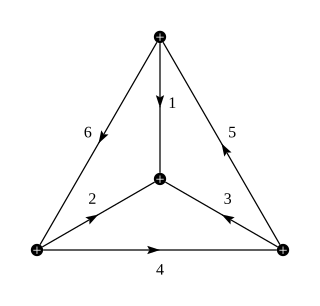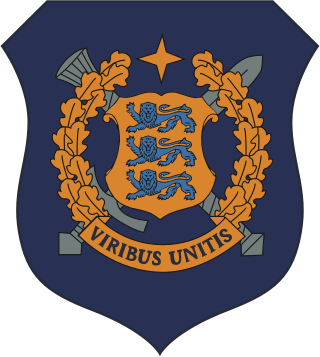
In computer science, an AVL tree is a self-balancing binary search tree. In an AVL tree, the heights of the two child subtrees of any node differ by at most one; if at any time they differ by more than one, rebalancing is done to restore this property. Lookup, insertion, and deletion all take O(log n) time in both the average and worst cases, where is the number of nodes in the tree prior to the operation. Insertions and deletions may require the tree to be rebalanced by one or more tree rotations.
Colon classification (CC) is a library catalogue system developed by Shiyali Ramamrita Ranganathan. It was an early faceted classification system. The first edition of colon classification was published in 1933, followed by six more editions. It is especially used in libraries in India.

The M2 is a 26-mile (42 km) long motorway in Kent, England, and was built to bypass a section of the A2 road in Kent, which goes through the Medway Towns, Sittingbourne, and Faversham. It provides an alternative route to the Port of Dover, which supplements the M20 motorway located further to the south. The terminal junctions of the M2 intersect with the A2, which come together to form a 62-mile (100 km) long trunk road from London to Dover.

The J-class submarines were seven submarines developed by the Royal Navy prior to the First World War in response to claims that Germany was developing submarines that were fast enough to operate alongside surface fleets. Six were completed during mid-1916, while a seventh entered service at the end of 1917.

The Bedford TJ is a truck that was produced by Bedford and its successors from 1958 to 1998, as a replacement for the earlier Bedford A series of medium-duty trucks that were built between 1953 and 1958. The TJ was the last bonneted truck produced by the company, and the last vehicle to be produced to have a relation with Bedford.
In physics, the Spalart–Allmaras model is a one-equation model that solves a modelled transport equation for the kinematic eddy turbulent viscosity. The Spalart–Allmaras model was designed specifically for aerospace applications involving wall-bounded flows and has been shown to give good results for boundary layers subjected to adverse pressure gradients. It is also gaining popularity in turbomachinery applications.

Wigner's 6-j symbols were introduced by Eugene Paul Wigner in 1940 and published in 1965. They are defined as a sum over products of four Wigner 3-j symbols,
A precedence graph, also named conflict graph and serializability graph, is used in the context of concurrency control in databases. It is the directed graph representing precedence of transactions in the schedule, as reflected by precedence of conflicting operations in the transactions. A schedule is conflict-serializable if and only if its precedence graph of committed transactions is acyclic.
In computer science, a charging argument is used to compare the output of an optimization algorithm to an optimal solution. It is typically used to show that an algorithm produces optimal results by proving the existence of a particular injective function. For profit maximization problems, the function can be any one-to-one mapping from elements of an optimal solution to elements of the algorithm's output. For cost minimization problems, the function can be any one-to-one mapping from elements of the algorithm's output to elements of an optimal solution.
Job-shop scheduling, the job-shop problem (JSP) or job-shop scheduling problem (JSSP) is an optimization problem in computer science and operations research. It is a variant of optimal job scheduling. In a general job scheduling problem, we are given n jobs J1, J2, ..., Jn of varying processing times, which need to be scheduled on m machines with varying processing power, while trying to minimize the makespan – the total length of the schedule. In the specific variant known as job-shop scheduling, each job consists of a set of operationsO1, O2, ..., On which need to be processed in a specific order. Each operation has a specific machine that it needs to be processed on and only one operation in a job can be processed at a given time. A common relaxation is the flexible job shop, where each operation can be processed on any machine of a given set.
In number theory, Jordan's totient function, denoted as , where is a positive integer, is a function of a positive integer, , that equals the number of -tuples of positive integers that are less than or equal to and that together with form a coprime set of integers
Flow-shop scheduling is an optimization problem in computer science and operations research. It is a variant of optimal job scheduling. In a general job-scheduling problem, we are given n jobs J1, J2, ..., Jn of varying processing times, which need to be scheduled on m machines with varying processing power, while trying to minimize the makespan – the total length of the schedule. In the specific variant known as flow-shop scheduling, each job contains exactly m operations. The i-th operation of the job must be executed on the i-th machine. No machine can perform more than one operation simultaneously. For each operation of each job, execution time is specified.

The Headquarters of the Estonian Defence Forces is the working body of the Commander of the Estonian Defence Forces and joint staff of the Estonian Defence Forces. Its main tasks include supporting the activities of the Commander and Deputy Commander of the Defence Forces; planning the activities of the Defence Forces; advising, supervising, coordinating and controlling the activities of the Defence Forces units.

In computer graphics, the centripetal Catmull–Rom spline is a variant form of the Catmull–Rom spline, originally formulated by Edwin Catmull and Raphael Rom, which can be evaluated using a recursive algorithm proposed by Barry and Goldman. It is a type of interpolating spline defined by four control points , with the curve drawn only from to .

The Samsung Galaxy Jseries is a discontinued line of entry-level 32-bit Android smartphones produced by the South Korean company Samsung Electronics, first introduced in 2015 and focused on emerging markets. This series is a part of Samsung Galaxy series, preceding the current Galaxy M Series and placed below the mid-range Galaxy A Series.

The Samsung Galaxy J6 is an Android smartphone developed by the Korean manufacturer Samsung Electronics. Announced on May 22, 2018 and released the same day along with the Samsung Galaxy J4 and the Samsung Galaxy J8, the J6 is a mid-range model smartphone and a successor to the Samsung Galaxy J5 (2017).

The Bethesda–Silver Spring Line, designated Route J1, J2, is a daily bus route operated by the Washington Metropolitan Area Transit Authority between Silver Spring station of the Red Line of the Washington Metro and Westfield Montgomery Transit Center. Route J1 operates in the weekday peak direction only while route J2 operates daily. J1 trips roughly takes 45 minutes while J2 trips take roughly 55 minutes.

This is a list of all commanders, deputy commanders, senior enlisted leaders, and chiefs of staff of the United States European Command.

This is a list of all commanders, deputy commanders, senior enlisted leaders, and chiefs of staff of the United States Indo-Pacific Command.

This is a list of all commanders, deputy commanders, senior enlisted leaders, and chiefs of staff of the United States Strategic Command.






























